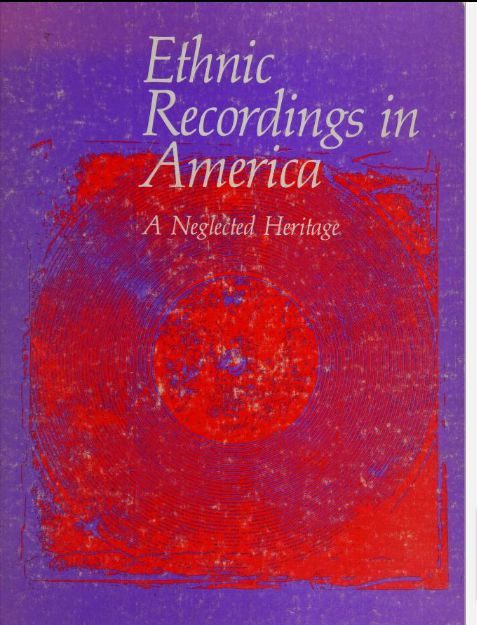by Basia Szydlowski
Ethnic Recordings in America continued
A direct result of this conference, “Ethnic Recordings in America: A Neglected Heritage,” produced a book titled after the conference. Not intended as a culmination of the meetings, the publication carries the imitative of the conference a step further-exploring more deeply some themes and beginning the task of assembling the research tools necessary for future investigation of the subject.
The forward of the book by American Folklife Center director Alan Jabbour captures the spirit of the conference.
“Scholars, collectors, record producers and dealers, shop owners, and recording artists all attended the conference – a rare and magical mix of all the concerned parties in one assembly. For me the emblematic moment of the conference occurred when Pekka Gronow, moderating a roundtable discussion with ethnic record producers and distributors, introduced Chicago Polka record producer Alvin Sajewski. Fellow producer Myron Surmach, whose record and bookstore served New York’s Ukrainian community, has just shared his thoughts and recollections with the conference. As Sajewski was being introduced, he rose, saying “Excuse me, I want to shake hands with Mr. Surmach. They had never met, though they had known of each other for decades, and a warm and lively discussion shared experiences ensued.”
The following excerpts from the book “Ethnic Recordings in America: A Neglected Heritage” follows the trail of polka recordings through the years.
There is no doubt that the development of the record industry and radio broadcasting has contributed to the leveling of musical tastes. Yet in some cases, the record industry has contributed to the continued existence and development of the musical traditions of relatively small groups, such as many ethnic groups in the United States. Each of these groups has had its own musical traditions, and each had used the new media (phonographs) in its own way.
At the beginning of the century, immigration was a highly visible phenomenon in the New York area, where the recording industry was concentrated. In 1900, 13.5 percent of the population of the United States was foreign born, and the figure was much higher in metropolitan areas such as New York. The foreign language press was an important part of the American press. In 1910, for instance, there were 700 foreign language dailies or weeklies in the United States with a total circulation exceeding 5 million. There were also foreign language theaters in large cities.
In 1897, on Chiago’s Northside, Wladyslaw H. Sajewski first opened the doors of his urban general store. With the increasing popularity of the phonograph, his wares also included Edison and Columbia cylinders and Columbia and Victor flat discs. The Columbia Phonograph Company urged its dealers in 1909 to: remember that in all large cities and in most towns, there are sections where people of one nationality or another congregate in “colonies.”
Most of these people keep up the habits and prefer to speak the language of the old country. Speak to them in their own tongue, if you can, and see their faces light up with a smile that lingers and hear the streak of language they will give you in reply. To these people RECORDS IN THEIR OWN LANGUAGE have an irresistible attraction, and they will buy them readily. (To be continued.)
